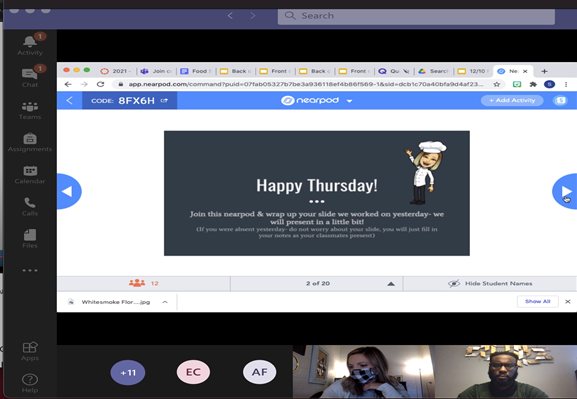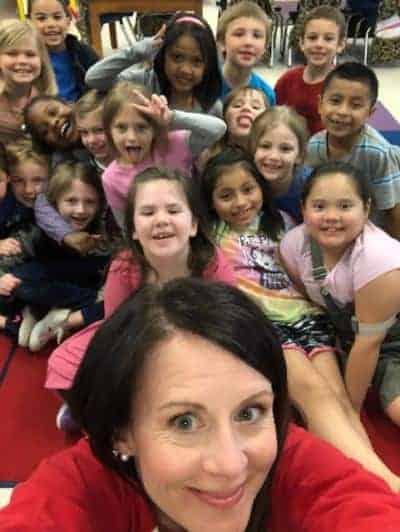
COVID-19 has presented an abundance of obstacles and opportunities for learning to educators. A most pressing challenge is the delivery of instruction. With school districts having autonomy in the method of instruction, support staff not directly connected to one school or district have had to navigate a variety of instructional learning plans to sustain partnerships.
Such was the case with myself in my role as an instructional coach. Supporting 22 beginning teachers across seven schools in one district, and two schools in a neighboring school district, I quickly had to adjust my support to coach remotely as my physical movement between schools and districts would present an issue of safety.
Along with this pivot to remote coaching came the additional challenge of supporting teachers in their delivery of hybrid instruction. Through this work, I have identified a guide of key practices that have been helpful in my role of providing remote, individualized coaching support to teachers in hybrid instruction models.
Scheduling
One of the biggest challenges with the transition to remote coaching was scheduling. In my current role, I support an average of 30 teachers within a 60 mile radius of my home. Before the pandemic, I was able to develop a routine that involved scheduling coaching observations and planning meetings based on the teachers’ schedule.
The move to hybrid instruction presented a combination of schedules. For example, the combination of A day, B day, asynchronous A day, asynchronous B day, and remote day is one teacher’s schedule that I would need to understand.
Benefits of Calendly
To adjust to the varying schedules, I implemented Calendly to schedule coaching visits with teachers. This platform syncs with my schedule and allows teachers to book times to meet with me throughout the week. One benefit of remote coaching is the flexibility of my availability. Using Calendly, I am able to schedule meetings with teachers at several schools within one day.
Hybrid: Asynchronous and synchronous instruction
Asynchronous instruction is the time that students spend outside of direct instruction with teachers. This instruction may include independent work or group collaboration to preview upcoming content or review covered content.
Synchronous instruction refers to the live and direct instruction that students receive from their teacher. Differentiating between asynchronous and synchronous support was a major milestone in my remote coaching support and allowed me to tier my support with teachers.
Asynchronous coaching support
Autonomous Canvas feedback
One way that I provide asynchronous coaching support is through feedback in the teachers’ learning management system. Teachers share access to their learning management system in order for me to review lessons, lesson plans, and even videos of their lessons.
Teachers indicate what they would like feedback on for the week on their Canvas page and I provide the feedback and resources via a shared coaching log that the teacher and I use to collaborate throughout the year. Teachers agree to review and acknowledge the feedback by picking an action step for our follow-up.
Choice in video feedback
Another way that I am able to provide asynchronous coaching support is through video feedback. Teachers either email a video of instruction or direct me to their learning management system to review a video. As a result of hybrid instruction, most of my teachers have become proficient in recording their lessons and uploading them to the learning management system.
This is an additional support for remote students who are 100% online. I view the instruction and provide coaching feedback and resources via a shared coaching log. The teacher acknowledges my feedback and the identified action step via the shared coaching log.
Synchronous coaching support
Tiered observations, feedback, and in-the-moment coaching
The coaching cycle would be incomplete without observation of teacher instruction. In the synchronous setting, the teacher and I set up a time for me to observe instruction with students where I log into the live classroom with students. Coaching feedback is shared in a coaching log in the form of notice/wonders with an identified action step.
In some cases, with pre-planning, I provide in-the-moment coaching with the teacher during synchronous live lessons. This tiered coaching strategy involves me inserting questions that guide the teacher throughout the live lesson or sending immediate action steps to the teacher via private chat. In-the-moment coaching takes some practice to navigate but can have a powerful impact on teaching and learning. All the while, students don’t know it is happening.
Intentional planning
Synchronous planning sessions allow for more intentionality in the time spent together. I have noticed less distractions during our planning sessions. Before hybrid instruction, factors outside of our control would often impact the productivity of planning meetings. I would enter the classroom during planning with an agenda of our time together but quickly adjust my top priority.
Being called to cover another class, an impromptu parent conference, or students entering the classroom for assistance are just a few examples of the obstacles that would impede the progress of our limited time together. For synchronous planning sessions, we login to a virtual meeting platform such as Zoom or Microsoft Teams with a set agenda. We are able to cover much more during that time with co-planning, debriefing an observation, reviewing data, and planning action steps for our next coaching session.
A learning experience
March 13, 2020 was the last time that I was in a school building with teachers and students as an instructional coach. I remember feeling lost about how I was going to make an impact in my role being that I could not have normal interactions and routines.
Transitioning to remote coaching presented an opportunity to develop my skill set as an instructional coach to best support teachers in their instructional practices. I know that my coaching continues to have an impact on the lives of the teachers and students that I interact with in this new normal of remote learning.
Recommended reading

